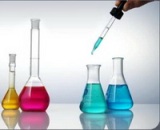Acetone Market Has Been Tightened by Phenol Demand Slowdown
12 Aug 2010 • by Natalie Aster

Acetone, the simplest of the ketones, is a clear, water-white volatile liquid, slightly hygroscopic with a mild, mint-like fragrant odour. It is highly flammable, miscible in all proportions in water, ethyl alcohol and ether, and will react explosively with strong oxidising agents.
Acetone is used to make a number of chemical derivatives such as methyl isobutyl ketone (MIBK), isophorone and diacetone alcohol/hexylene glycol. The two main uses for acetone are in the manufacture of methyl methacrylate (MMA) and bisphenol-A (BPA). It also goes into many solvent applications with pharmaceuticals the largest sector and is used to make a number of chemical intermediates. Other smaller uses include electronics, surface coatings and printing inks and hot stamp foils. Growth in this sector is around 3%/year.
The solvents sector is a significant outlet for acetone with consumption estimated at around 2,2m tonnes in 2009. Pharmaceuticals accounts for the largest demand at close to 700,000 tonnes. Glass reinforced plastics, cigarette tow, rubber chemicals and household, cosmetic and personal care products make up another 950,000 tonnes of demand.
Around 90% of acetone is produced via the cumene route - 1 tonne of phenol gives 0.62 tonnes of acetone. Thus acetone being a by-product of phenol production, the acetone market largely follows all major trends and developments of the phenol market though the last one is estimated to be growing 1% per year faster than acetone. Furthermore, the slowdown in phenol demand has tightened the acetone market, as demand for acetone fell less than for phenol. This has impacted the price ratio of acetone to propylene and phenol profitability. It is forecast that future growth of global acetone demand will not be sufficient to absorb capacity growth, leading to a surplus of acetone.
In Europe, operating rates on phenol/acetone dropped since the middle of 2008 on poor demand for phenol derivatives, particularly bisphenol-A (BPA) and caprolactam. 2009 operating rates for phenol and its by-product acetone were around 50-70%, depending on source.
In 2009 US acetone operating rates were down more than 50% due to the weak phenol market, the demand was down by 20-30%.
Operating rates in the Asian region were around 60-80% in 2009.
More information on the global acetone market may be found in the report Acetone: 2010 World Market Outlook And Forecast recently published by TD The Market Publishers, Ltd.
Source: MarketPublishers, Ltd.
Analytics & News
